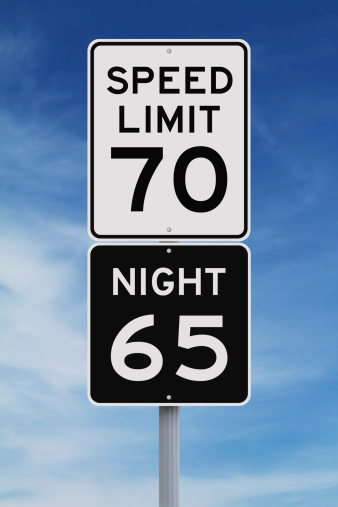Learn which US states have the highest speed limits and whether this affects car accident rates.
Up until 1955, all roads in every state were governed by the nationwide speed limit of 55 mph. Since receiving the right to set their own speed limits, 34 states have raised speed limits on some roadways to 70 or above. By averaging the top speed limits on different types of roads, the Governors Highway Safety Association has ranked the states by speediness. Here is their list of the top 10 speediest states, along with some information about car accident rates in each state from the Insurance Institute for Highway Safety.
 Louisiana: Average top speed 72 mph (75 on rural interstates, 70 on urban highways and limited access roads). 15.7 fatalities per 100,000 people; 1.55 fatalities per 100 million miles traveled.
Louisiana: Average top speed 72 mph (75 on rural interstates, 70 on urban highways and limited access roads). 15.7 fatalities per 100,000 people; 1.55 fatalities per 100 million miles traveled.
Oklahoma: Average top speed 72 mph (75 on rural interstates, 70 on urban highways and limited access roads). 18.6 fatalities per 100,000 people; 1.49 fatalities per 100 million miles traveled.
Kansas: Average top speed 72 mph (75 on rural interstates, 70 on urban highways and limited access roads). 14.0 fatalities per 100,000 people; 1.35 fatalities per 100 million miles traveled.
North Dakota: Average top speed 73 mph (75 on rural and urban highways and 70 on limited access roads). 24.3 fatalities per 100,000 people; 1.86 fatalities per 100 million miles traveled.
South Dakota: Average top speed 73 mph (75 on rural and urban highways and 70 on limited access roads). 16.0 fatalities per 100,000 people; 1.48 fatalities per 100 million miles traveled.
Utah: Average top speed 73 mph (75 on rural interstates (80 on certain segments), 65 on urban highways and 75 on limited access roads). 7.6 fatalities per 100,000 people; 0.83 fatalities per 100 million miles traveled.
Maine: Average top speed 75 mph (75 on all categories). 12.3fatalities per 100,000 people; 1.15 fatalities per 100 million miles traveled.
Wyoming: Average top speed 75 mph (75 on rural and urban interstates (80 on certain segments), 65 on some limited access roads). 21.3 fatalities per 100,000 people; 1.33 fatalities per 100 million miles traveled.
Idaho: Average top speed 77 mph (75 on rural and urban highways (80 on certain segments), 70 on limited access roads). 11.5 fatalities per 100,000 people; 1.15 fatalities per 100 million miles traveled.
Texas: Average top speed 78 mph (75 on rural and urban highways (85 on certain rural segments) and 75 on limited access roads). 13.0 fatalities per 100,000 people; 1.43 fatalities per 100 million miles traveled.
As you can see, there is no clear correlation between speed limits and fatality rates. Slower does not automatically equal safer, because there are so many other variables involved in car accidents, such as the influence of alcohol, road conditions, and traffic conditions. For example, although North Dakota has speed limits equal to or lower than Texas, Texas has fewer fatal accidents per capita and per mile driven. One could theorize that this is due to the hazardous winter road conditions in North Dakota, combined with the presence of many large trucks on that state’s roadways.
Here in California, the average top speed is 68, and we have only 7.5 fatalities per 100,000 people and 0.89 per 100 million miles traveled. Of course, if a car accident affects you or your loved ones, California’s relatively good safe driving statistics will not be of much comfort. Fortunately, you can get help from an expert auto accident attorney if the incident was not entirely your fault, so you can recover the funds needed to pay your medical bills and other expenses.




